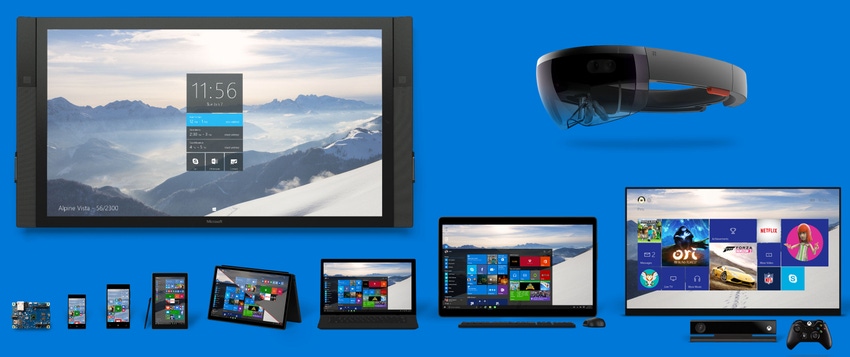Microsoft formally announced the hard launch of Windows 10 on 29 July as a free upgrade for existing Windows users, but the mobile version remains the elephant in the room.
June 2, 2015

Microsoft formally announced the hard launch of Windows 10 on 29 July as a free upgrade for existing Windows users, but the mobile version remains the elephant in the room.
A major characteristic of Windows 10 is that it will attempt to fully unify the OS on all device form-factors: PCs tablets and smartphones. This is not only sensible, but necessary given Microsoft’s failure to establish significant market share for Windows Phone. Since most of the world uses Windows PCs, full cross-functionality between PCs and mobile devices may be the strongest weapon in Microsoft’s arsenal as the mobile era matures.
But Microsoft’s priority must be to get its PC house in order before turning to mobile. In yesterday’s launch announcement all the talk focused on the PC. It was symbolic that the exec Microsoft put forward to deliver this message was Joe Belfiore, who was previously in charge of Windows Phone but has now added PCs to his remit, rather than OS boss Terry Myerson or, indeed, former Nokia CEO Stephen Elop.
In the promotional video below Belfiore continues his drive to convince the market that developers are keen to make apps for Windows. While not explicitly stated, this is a nod to mobile, with lack of developer support being one of the key factors inhibiting Microsoft’s success there. Microsoft also continues to buy app credibility, such as the reported acquisition of Wunderlist.
However, recent research by analyst firm Strategy Analytics reveals developer support for Windows Phone is actually declining. Support peaked, albeit at a low level, in 2013 when Nokia under Elop was at its most proactive in promoting the platform, but now less than 2% of developers surveyed planned to make Windows their primary platform next year.
“Microsoft finds itself in a Catch-22,” said analyst Joshua Martin. “It needs apps to be competitive and it needs users to get apps. The decision to offer OS upgrades for free will help achieve market share but I wonder if these users will be interested in downloading, buying and using apps – which is essential to garnering developer support.
“The realization of the long promised unified Windows across PC, tablet and phone is a compelling reason for developers to give Windows a second look but to truly win support Microsoft must offer engaged app users and a return to Nokia’s robust developer outreach. Microsoft only has one more chance to get this right.”
That Catch-22 has always existed and Android was brutally effective at generating such large market share that developers are forced to use it. However Apple iOS continues to be the first choice for many developers despite having a fraction of Android’s global smartphone share due to a combination of good developer relations, a quality app store, the attractive demographic of iPhone users and the prestige of the brand. Microsoft must do all of these things right, but also effectively capitalize on its unique offerings: the Windows PC installed base and the ubiquity of Office.
About the Author(s)
You May Also Like








.png?width=300&auto=webp&quality=80&disable=upscale)


_1.jpg?width=300&auto=webp&quality=80&disable=upscale)


.png?width=800&auto=webp&quality=80&disable=upscale)